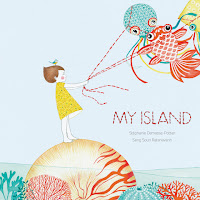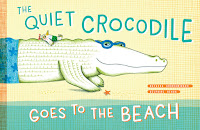Today would be special. Today would be splendid. It was Saturday! But sometimes, the best plans don’t work out exactly the way you expect...
In this heartfelt and universal story, a mother and daughter look forward to their special Saturday routine together every single week. But this Saturday, one thing after another goes wrong–ruining storytime, salon time, picnic time, and the puppet show they’d been looking forward to going to all week. Mom is nearing a meltdown...until her loving daughter reminds her that being together is the most important thing of all.
Author-artist Oge Mora’s highly anticipated follow up to Caldecott Honor Thank You, Omu! features the same magnificently radiant artwork and celebration of sharing so beloved in her debut picture book.
In Oge Mora’s second picture book, Ava and her mother look forward to Saturday each week, because Ava’s mother has to work the other days (Sunday-Friday). Saturdays have a special routine, and a treat at the end – but this Saturday doesn’t go as planned! Each time something doesn’t turn out, mother and daughter take a deep breath and move on, determined that the day will still be special. On the surface, Saturday is a story of family togetherness, but it also includes lessons on continuing through life with a positive attitude instead of getting frustrated in the face of obstacles, valuing people over things, and making your own fun no matter what happens.
One of the things I loved about Mora’s debut was that although the story had the look and feel of a classic, it also contained the touchstones and details that set it in a particular cultural community and neighborhood (African-American, immigrant). Mora’s Saturday does the same, but even more so. While any parent and child with too little quality time together will identify with the story, it will be especially poignant for working mothers, single parents, and African-American families (the salon scenes!). That doesn’t mean it won’t be a classic (it will)! The themes in Saturday are universal, and the story is told so charmingly that I can see this book being requested over and over again for storytime, bedtime, and any time.
But let’s get to the Art, with a capital “A” intended – the true highlight of a Mora picture book (and yes, I feel comfortable saying that after only two books!). Mora works in a bright palette, using paint markers, patterned paper, and old book clippings. The layering of cut paper pieces adds texture and dimension to each scene, and the vivid patterns and colors are a feast for the eyes. Mora is also excellent at imbuing her spreads with motion – choosing to portray things that are happening “mid-shot,” and including rounds of changing character looks on a single page. I also love the inclusion of hand-cut letters that distinguish the text and add excitement (“zoom” and “Saturday” are the two most frequently singled out words).
Listen, it’s just a beautiful book, through and through. Mora is a fantastic artist and a good storyteller, and she has a crew at her publisher (Little, Brown) who compliment her art with gorgeous design. I want to keep this book to myself forever, but I suppose I’ll share it with some lucky little in my life!
Recommended for: fans of vibrant, diverse picture books in the vein of The Last Stop on Market Street and The Snowy Day, and any and all readers ages 4 and up.
Saturday will be released by Little, Brown on October 22, 2019.



























